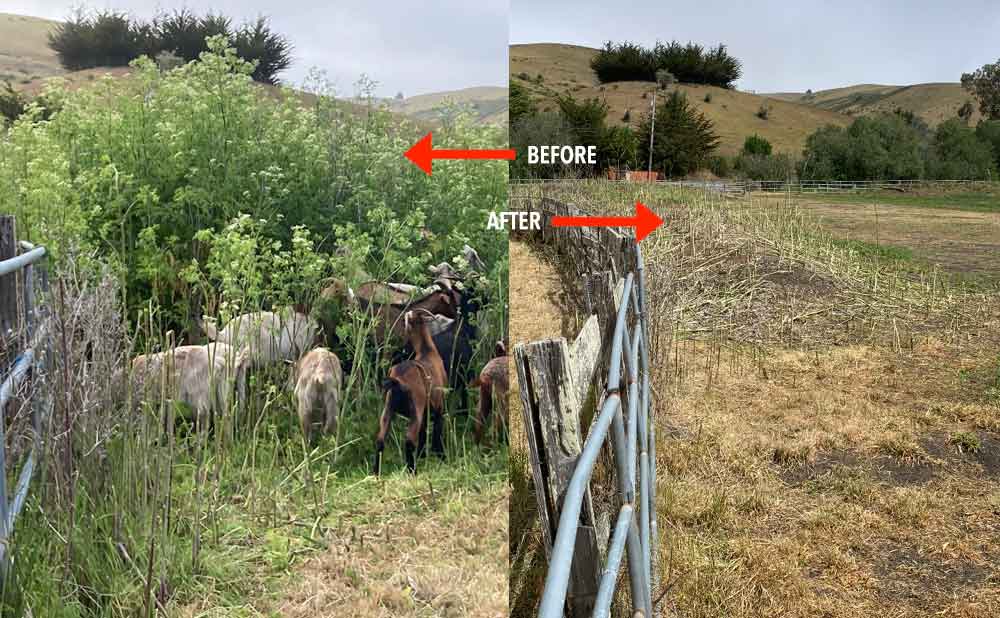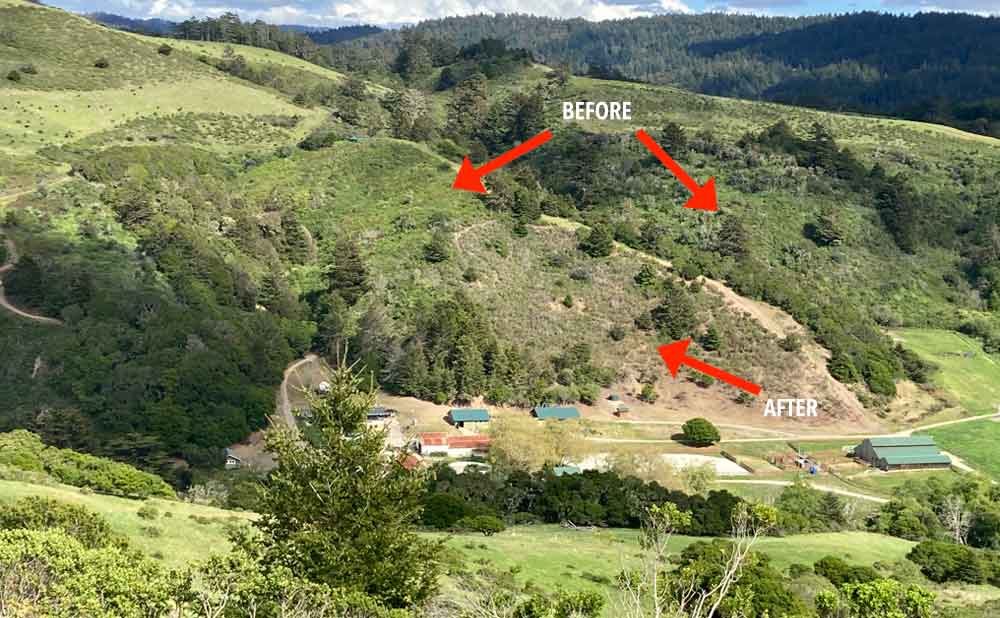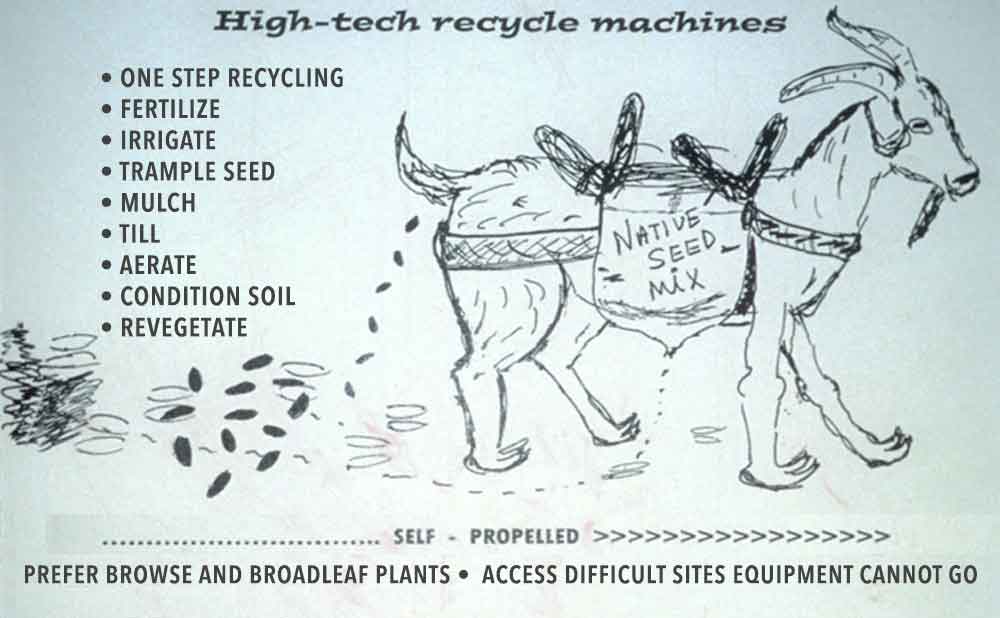Contract Goat Grazing Managing Wildfire Risk
In the face of climate change with less available water and more deadly wildfires, managed goat herds are an effective wildfire prevention tool with a comparably tiny footprint.
States from Colorado to California are wisely turning to hungry goats to reduce hazardous fuels to prevent forest fires. Goats have a diverse diet and appetite for all vegetation that makes up the fire fuel ladder. The goats eat and recycle flammable materials in situ to organic matter—or what we like to call “pure gold” that feeds the soil.

Ecological benefits of goat grazing for land management
Contract grazing can help in the continued effort of fire fuel reduction and ecological restoration. States from Colorado to California are turning to goats to reduce fire risk. Goats are one of the best fire fuel reduction tools available. They eat and recycle fire fuel materials in situ, then trample the resulting fertilizer into the ground building soil organic matter–all at the same time.
Our model captures carbon and returns it to the soil via the guts of grazing goats. Hoof action creates stability of soil as herd hooves massage and compact soil. Once seeded, goat feces and urine fertilize the soil and return it to optimal chemical conditions for speedy growth. Goats are self-propelled land-healing machines. We know it works because we’ve been working with the goats to rebuild degraded, polluted lands back into living, functioning ecosystems for years. We want to train you to do it too because climate change is upon us and the time to act is now.
Contract grazing work restores ecological health; watershed health and function are the highest priority for the sustainability of freshwater quality and quantity held in soils. Systematic goat grazing practices, among other benefits, help to reverse climate change by rebuilding soil organic matter, and restoring biodiversity both above and below the soil surface. Improved water holding capacity and soil carbon storage at greater depths is a vital ecosystem service.

Goats reduce flammable fuel load vegetation
Goat Green’s herd of 26th generationally breed goats is for non-toxic fire mitigation and prevention and non-toxic noxious vegetation management. They effectively clear steep or hard-to-reach hillsides of invasive, fire-fueling vegetation.
Goatapelli Foundation co-founder Lani Malmberg explains their goats have an appetite for the kind of vegetation that makes up the fire ladder. Horses and cattle will eat nothing but grass if given a choice, but goats will eat noxious leaves and thistles
The goats are doing fifteen things at the same time. Beyond clearing the fire fuel ladder, the land also benefits from improved soil conditions and better soil health.
Unlike the use of chemical applications, goat hooves play an important role in creating soil that is healthy because now it holds air and moisture. When goats stomp around, they aerate the soil and trample plant matter aiding the breakdown of nutrients by fungi and bacteria and boosting soil health including its potential for water retention – particularly important when vegetation moisture levels are low. Their hoove action prevents erosion and builds soil structure.
Simultaneously, the vegetation the goats eat moves through their digestive tract and deliver accessible nutrients to soil microbes. When goats lay down together to sleep or chew their cud, their body heat warms the soil, helping seeds germinate.

